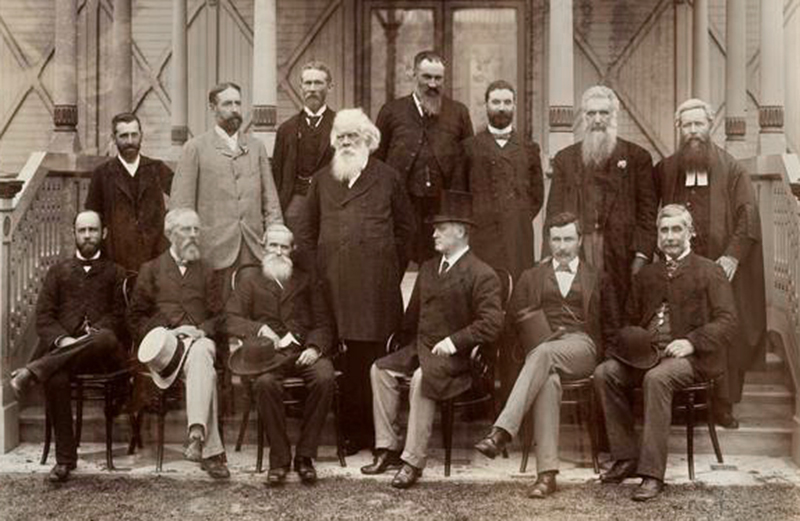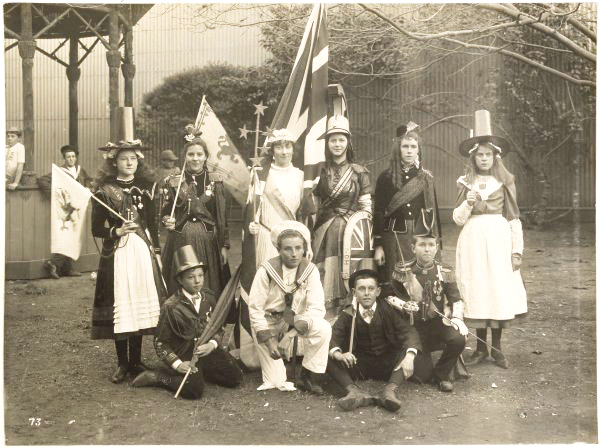Federation
In 1901, 6 British colonies united to become a new nation – the Commonwealth of Australia. This fact sheet examines the reasons for Federation, the path to Federation, the creation of the territories and the opening of the Australian Parliament.
What will I learn?
- Australia became a nation on 1 January 1901. This is known as Federation.
- Forming the new nation took time and there were many meetings to decide how it would run.
Curriculum alignment
Year 6 ACHASSK134
Year 6 ACHASSK135
What is Federation?
The Commonwealth of Australia was officially formed on 1 January 1901 when 6 British colonies—New South Wales, Victoria, Queensland, South Australia, Western Australia and Tasmania—agreed to unite under the Australian Constitution. The colonies became the states of Australia and gave up some of their powers and responsibilities to the newly formed federal – national – Parliament. This moment is known as Federation.
The path to Federation
For at least 60 000 years, Aboriginal and Torres Strait Islander peoples have lived on these lands and practiced traditional cultures and languages. From the late 1700s, British colonies were established on the continent. By the late 1800s, these colonies had their own parliaments and could make laws but they were still under the rule of the British Parliament.
Members of the Australasian Federation Conference, 1890.

National Library of Australia, AN14292110
Description
A sepia-toned photograph of a group of men in formal attire in front of a building portico. Six men (including one wearing a top hat) are seated on chairs. Eight men stand behind. Henry Parkes is fourth from left and Alfred Deakin is sixth from left.
Copyright information
You may save or print this image for research and study. If you wish to use it for any other purposes, you must declare your Intention to Publish.
Each colony had its own government and made different laws. They had their own railway systems, postage stamps and taxes. This caused many problems and people began to think about the benefits of uniting as one nation. Some people argued a national government would:
- increase trade and strengthen the economies of each colony by removing internal taxes and borders
- create a national defence force to protect the continent in case of invasion
- control immigration from non-British countries
- create a more democratic system of government that provided greater freedoms for citizens.
The federation process took a long time. Many events were held to discuss the ideas for federation and to plan how the new nation would work. Some of the major events that led to Federation were:
| 1889 | Tenterfield oration Sir Henry Parkes, Premier of New South Wales, gave a speech calling for ‘a great national government for all Australians’. This helped spark the Federation movement. |
| 1890 | Australasian Federation Conference Representatives from each of the colonies and New Zealand met, and decided the colonies should unite to become a nation. |
| 1891 | First National Australasian Convention A draft constitution for the new nation was written. |
| 1897-98 | Second National Australasian Convention Representatives from each of the colonies (except Queensland and New Zealand, who had pulled out of the process) agreed to changes to the draft constitution. |
| 1898 | First referendum Voters in New South Wales, Victoria, South Australia and Tasmania were asked to approve a constitution for the new nation. |
| 1899 | Secret premiers’ conference In order to win the support of the New South Wales and Queensland premiers, changes were agreed to the draft constitution, including the location of the new national capital. |
| 1899 | Second referendum All the colonies except Western Australia held referendums to approve the proposed constitution and they all agreed. |
| 1900 | The British Parliament approves the constitution The Commonwealth of Australia Constitution Act 1900 is passed by the British Parliament and signed by Queen Victoria in July 1900. |
| 1900 | Western Australia holds referendum Western Australia approves the constitution and agrees to join Australia. |
| 1901 | Federation On 1 January 1901, the colonies of New South Wales, Queensland, South Australia, Tasmania, Victoria and Western Australia united and became the states of Australia. The new country is known as the Commonwealth of Australia. |
The territories
In 1901 the Australian Capital Territory and the Northern Territory did not exist. A national capital was needed for the new Australian Parliament to meet. Section 125 of the Constitution says that the national capital had to be located within New South Wales and at least 100 miles (160kms) away from Sydney. In 1911 the Australian Government created the Australian Capital Territory to be the location of the national capital of Australia. In the same year, the Northern Territory was also created. This area had previously been part of South Australia.
Although part of the Commonwealth, the territories do not have the same legal status as states.
Children celebrating Federation, Melbourne 1901.

National Library of Australia, an13117280-22
Description
This black and white photo is of a group of older children in 1901. They are dressed in elaborate costumes to celebrate Australia's Federation. The costumes highlight Australia's British heritage. A large Union Jack is being held by one of the group.
Copyright information
You may save or print this image for research and study. If you wish to use it for any other purposes, you must declare your Intention to Publish.
A new nation and a new Parliament
When the Commonwealth of Australia was officially declared on 1 January 1901, a ceremony was held in Centennial Park in Sydney. The first Governor-General, Lord Hopetoun, was sworn in and the first Prime Minister, Edmund Barton, and federal ministers took the oath of office. Many Australians celebrated their nationhood by taking part in parades, sporting events and school pageants.
The first federal elections for the new Parliament were held on 29 and 30 March 1901. The first Parliament was opened by the Duke of Cornwall and York (later King George V) in Melbourne on 9 May 1901.
Missing voices
Although there was widespread support for Federation, not everyone was able to take part in the process. The voices of some Australians were absent. Women in the colonies (except for South Australia and Western Australia) were not able to vote in the referendums, and Aboriginal and Torres Strait Islander peoples were mostly excluded from voting and taking part in the proceedings and celebrations.